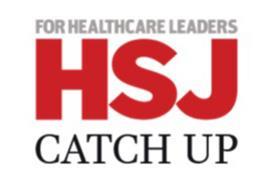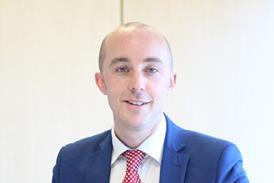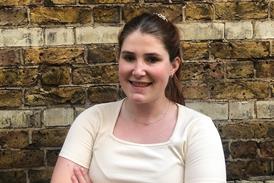The clinical coding system is complex and imperfect, but departments must work with it to ensure they receive appropriate payment for their work. Showkat Mirza provides an introduction

In 2004, the payment by results system was introduced to the NHS in England. In this system a tariff is paid for each activity, for example clinic attendance, emergency admission, a procedure or operation. Previously, block contracts occurred where a yearly fee was paid to provide a service such as ear, nose and throat.
It was hoped the new system would encourage hospitals to be more productive and efficient. But is there any evidence for this? Interestingly, due to financial constraints some commissioning bodies are capping payments to a limit or have even been reverting to the block contract system.
‘We found about 10 per cent of procedures were not recorded and 9 per cent were coded incorrectly’
Consider a patient who undergoes a transnasal sphenopalatine artery ligation as an emergency. This is a highly effective endoscopic operation for ceasing an acute posterior epistaxis (nosebleed) and avoids repeated and prolonged nasal packing with its associated complications and morbidity.
If the operation is coded as E05.1 − cauterisation of internal nose − then the payment tariff will be £856. However, a more accurate code would be E05.2 − ligation of artery of internal nose − with a tariff of £2,892. This is a difference of £2,036.
Accurate clinical coding with appropriate tariffs is important for departments and trusts. The consequences could be a deficit. This may affect the maintenance and development of services, staff, equipment and perhaps viability.
Outpatient clinical coding
Table 1 shows the outpatient tariffs for various medical specialties. The first attendance, single professional tariff is for a new patient seen by a single clinician as occurs in most clinics.
The multi-professional tariff is for multidisciplinary clinics where there is more than one clinician in the clinic room, as in many head and neck multidisciplinary team clinics. The last two tariffs are for follow-up appointments.
The tariffs are worked out from a process called reference costing, and are essentially the average national costs for seeing a patient. The costs may include staff, equipment, investigations and other factors. Seeing more patients per clinic drives down costs and to some extent may explain the range of tariffs.
‘Suboptimal coding of surgical operations can lose departments a considerable amount of money’
When a patient undergoes a procedure in clinic, then a procedure tariff is given. For example, an adult patient who has nasal cautery has a tariff of £127 whether they are a new or follow-up patient. This tariff includes seeing the patient.
There is not a tariff of £114 for seeing a new patient plus £127 for the nasal cautery but just £127. The various procedure tariffs may offset the relatively low outpatient tariffs in some specialties to a degree.
At Sheffield Teaching Hopsitals Foundation Trust, we performed an adult outpatient procedure coding audit that looked at 370 attendances, and found about 10 per cent of procedures were not recorded and 9 per cent were coded incorrectly, losing £2,314. When extrapolated that comes to potentially £100,000 a year.
Inpatient clinical coding
Suboptimal coding of surgical operations can lose departments a considerable amount of money. A published audit of the clinical coding of ENT operations estimated a loss of £400,000 a year. After each patient elective or emergency admission (patient clinical episode), clinical coding of that admission is performed.
Clinical coding is the process whereby information from the hospital case notes for each patient is expressed as codes. This includes the operation/treatment, diagnosis, complications and comorbidities.
These codes are processed to result in one of a number of possible health resource group codes, each of which has a specific payment tariff that the hospital receives. Procedures are coded using the latest version of the Office of Population, Censuses and Surveys Classification of Surgical Operations and Procedures book.
Diagnoses are coded using the latest version of the World Health Organization’s International Statistical Classification of Diseases and Related Health Problems book. All the various procedure codes can now also be accessed via the NHS Information Centre website or the NHS Reference iPhone app.
The precise process of clinical coding may vary between specialties but some of the other factors that may affect which HRG and tariff is designated to a patient clinical episode include complexity (minor, intermediate, major or complex), whether the patient is a child or an adult, and the presence of comorbidities/complications.
Tariff variables
As an example, a patient who undergoes the endoscopic nasal polypectomy operation. This equates with the OPCS operation code E08.1 − polypectomy of internal nose, which is in the intermediate nose procedure group. The patient is over 18 without comorbidities, giving an HRG code of CZ13Y and this HRG has a yearly fixed tariff which is currently £1,174 for elective surgery.
Other variables may increase the final payment tariff such as length of stay, regional variations and top-ups for certain procedures. Emergencies often have a higher tariff then elective procedures. A list of some surgical procedures and their tariffs are shown in table 2, below.
Table 2: The tariffs of some surgical procedures (elective procedures in adults without a comorbidity/complication)
Excision of lesion of tissue of frontal lobe of brain £5,794*
Excision of lesion of pituitary gland £5,794*
Subcutaneous mastectomy £2,037
Phacoemulsification of lens £854
Exploration of mastoid £1,949
Septorhinoplasty £1,470
Total laryngectomy £7,565
Diagnostic fiberoptic endoscopic examination of lower respiratory tract and biopsy of lesion of lower respiratory tract £503
Full dental clearance £631
Total oesophagectomy and anastomosis of pharynx to stomach £503
Fiberoptic endoscopic examination of upper gastrointestinal tract and biopsy of lesion of upper gastrointestinal tract £405
Sigmoid colectomy and anastomosis of colon to rectum £5,130
Haemorrhoidectomy £912
Resection of segment of liver £5,598
Total cholecystectomy NEC, laparoscopic £1,662**
Repair of tetralogy of fallot using valved right ventricular outflow conduit £12,638
Autograft replacement of three coronary arteries NEC £7,358
Nephrectomy NEC £4,443
Total excision of prostate and capsule of prostate £4,051
Percutaneous transluminal coil embolisation of large aneurysm of artery £1,178
Total abdominal hysterectomy NEC £2,599
Primary repair of inguinal hernia using sutures £1,136**
Primary microdiscectomy of lumbar intervertebral disc £3,284
Primary total prosthetic replacement of hip joint using cement £5,382
* Neurosurgical procedures receive an additional 28 per cent top-up to the tariff shown
** Daycase tariff
NEC − not elsewhere classified
So, how do you optimise clinical coding and tariffs? Some operations have one obvious OPCS procedure code and are straightforward to code, but when you have an operation for which you have a number of coding options then the more accurate code may have a higher tariff.
‘We now prospectively review each month’s clinical coding to optimise accuracy and income tariffs’
But how to know what possible codes you can use for an operation is difficult because it’s hard to find a format where they are all together. The key is to group list them, typically according to anatomical site or type of operation, eg: paranasal sinus procedures or procedures done for epistaxis.
Table 3, below, features a concise example of a list for endonasal paranasal sinus operations. So when a sinus operation is performed, the more accurate procedure code from this list is selected; for example for a middle meatal antrostomy select E13.3 − intranasal antrostomy (£1,470), not E13.1 − drainage of maxillary antrum NEC (£621).
Table 3: OPCS codes, procedures and tariffs for elective adult endonasal (eg functional endoscopic sinus surgery) paranasal sinus operations.
Complex nose (£1,496, +cc £1,851)
E15.1 Drainage of sphenoid sinus
V06.1 Medial maxillectomy
Major nose (£1,470, +cc £1,552)
E13.2 Excision of lesion of maxillary antrum
E13.3 Intranasal antrostomy
E14.2 Intranasal ethmoidectomy
E14.8 Other specified operations on frontal sinus
Intermediate nose (£1,174, +cc £1,235)
E13.4 Biopsy of lesion of maxillary antrum
E13.8 Other specified operations on maxillary antrum
E17.8 Other specified operations on unspecified nasal sinus
E08.1 Polypectomy of internal nose
Minor nose (£621, +cc £700)
E13.1 Drainage of maxillary antrum NEC
E13.6 Puncture of maxillary antrum
+cc − with comorbidity or complication
Receiving the right amount
In our adult clinical practice in Sheffield, we now prospectively review, before the submission deadline, each month’s clinical coding with data readily obtained from our trust’s intranet, in order to optimise coding accuracy and income tariffs.
This has achieved a tariff gain of £33,364 in ENT over nine months and £35,156 in neurosurgery over three months. However, it should be noted that coding improvements had already been learnt that have ongoing benefits, so the actual gains are higher.
‘The coding system is complicated and in some ways flawed, but departments must work within the system’
In some specialties, when multiple operations are performed at the same sitting (eg: grommets and adenoidectomy), the tariff for only one operation is given. The tariff may be affected by the order of codes so put the highest tariff operation higher in the order if possible. In this case, adenoidectomy first and then grommets, otherwise more than £300 may be lost. Comorbidities such as diabetes should be noted as this may increase the tariff.
For some procedures the tariff gains can be substantial, for example in complex major mouth procedures such as a total laryngectomy, the gains may range from £3,378-£11,064 depending on the complexity of the comorbidity.
If a patient is readmitted within 30 days with a complication then no payment tariff is given. This is to encourage the reduction of complications.
Best practice tariffs give preferential tariffs in a number of surgical specialties for certain procedures when performed as a daycase, for example a daycase septoplasty tariff is £1,183, whereas an inpatient septoplasty tariff is £983.
These tariffs are apparently temporary for just a few years in order to encourage daycase surgery, but can result in a loss of income even if recommended daycase rates are achieved.
The coding system is complicated and in some ways flawed, but departments must work within the system to ensure they receive appropriate tariffs for the work they carry out and clinician involvement may aid this. In the future, new OPCS codes will be added and those working in the system are endeavouring to make the process more accurate and representative.
Showkat Mirza is a consultant at Sheffield Teaching Hospitals Foundation Trust and Sheffield Children’s Hospital Foundation Trust, and chair of the expert working group for Chapter CZ (head and neck and ears) on behalf of the NHS Information Centre



























4 Readers' comments